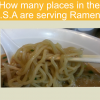Italian Pasta, Made In Japan?! What Is It Like?

Japanese people are amazingly open-minded and fearless when it comes to trying out new foods. This open-mindedness and love of new food has created a real trend in Japan: international foods made in Japan, or adapted for the Japanese consumer. These type of food are called Yoshoku, a westernized dish that has been incorporated into Japanese Food culture. Japan is particularly fond of Italian food, called "itameshi" in Japanese.
Japanese cooks, professional or amateur, come up with all sorts of Italian inspired recipes, mostly pasta recipes. The classics are very popular: carbonara, bolognese, putanesca, primavera, etc. but they too are adapted by Japanese cooks. Let's look at the differences between Japanese and Italian pastas.
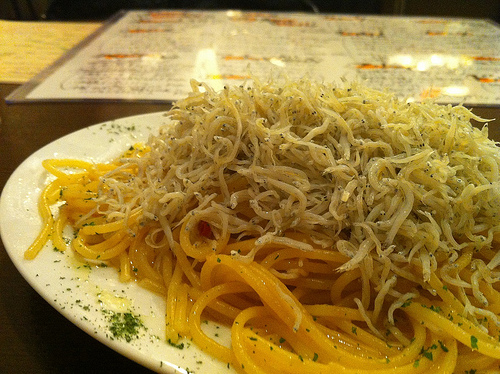
 by hirotomo
by hirotomo
Differences is in Technique
To begin, let's mention that when we speak of "Japanese pastas" we do not speak of 'Classic Japanese noodles' like "udon" or "soba" but of Italian-style wheat pastas like spaghetti, vermicelli, fusili, capellini and the rest. The main differences between Japanese pasta dishes and Italian pasta dishes are the cooking techniques and ingredients. Techniques differ slightly: Japanese cooks may use long chopsticks to move the pastas as they cook and Italian cooks usually use a fork. Japanese cooks may use a bamboo mat to drain the pasta and Italian cooks normally use a regular colander or strainer. As you can see, the Japanese cooks simply use the tools they usually use to cook Japanese dishes.
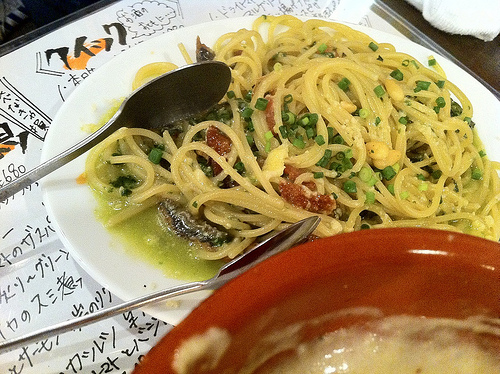
 by hirotomo
by hirotomo
Japan's supermarkets carry many foreign brands of pastas, and some are even made in Japan. The dry pastas used to make Italian pasta dishes in Japan are the same used in Italy. Japanese cooks may use the wok more often rather than use a regular pan. Wok cooking lends itself really well to many types of pasta sauces!
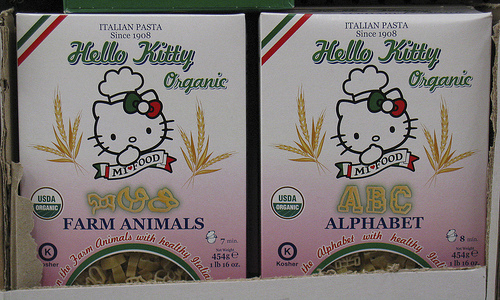
 by oliva732000
by oliva732000
How about the ingredients in Japanese Pasta?
Japan is an important fishing nation, and fish is the staple of most Japanese dishes. Fish (or tofu) often replaces chicken in Japanese pasta dishes. Some vegetable used oin Italian cuisine may also be replaced for local favorites like daikon, okra or eggplant.
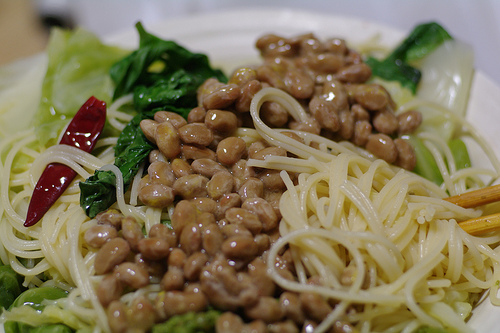
 by nash1011
by nash1011
Japanese Pasta Sauce Packets!
Japanese cooks not only adapt Italian pasta dishes to Japanese tastes, but they have invented new pasta sauces. Some of these sauces have very interesting flavors, which can be found nowhere else in the world. The following are some very convenient sauce packets full of Japanese flavor and ingenuity.
1. Japanese Squid Ink Pasta Sauce Packet: Yes, squid ink! Squid ink is used in many Japanese dishes. This sauce has a robust ocean flavor and turns the pasta a deep black. It is an acquired taste but is sure to impress your dinner guest. Try once if only for the novelty of it.
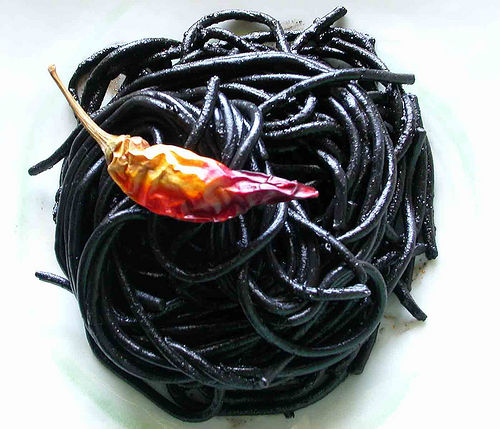
image source: scentofgreenbananas.blogspot.ca
2. Japanese Urchin Cream Pasta Sauce Packet: Urchin is considered a true delicacy in Japan so it is no wonder that it is now being used as a pasta sauce. This creamy sauce is salty, savory and subtle. The creamy texture truly reminds of Italian pasta sauces.
3. Tarako Spicy Cod Roe Pasta Sauce Packet: The delicate taste of cod and the kick of the spices create this very popular sauce.
4. Chili Pepper Peperoncino, Garlic and Olive Oil Pasta Sauce Packet: This sauce tastes like the old Italian classic but is more spicy and more garlicky. The classic "Aglio, olio e peperoncino" reinvented and made in Japan!
5. Japanese Plum Umeshiso Pasta Sauce Packet: Plums are one of Japan's favorite fruits along with sweet oranges and strawberries. This sauce has a unique taste: it isn't too sweet, nor too salty, and it is like nothing you've ever tasted. Who would've thought that plums and pastas would go well together? Also make sure to check out our article on Umeshu, a plum alcoholic drink popular in Japan.
There are many, many more types of Japanese pasta sauces, this is Japan of course! Whether they replicate classics, change ingredients to better suit the Japanese tastes or invent brand new sauce recipes, Japanese cooks and Japanese pasta fans have a true and deep love for Italy's staple dish.




